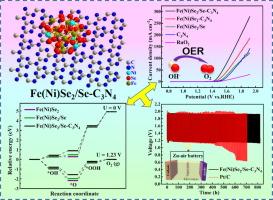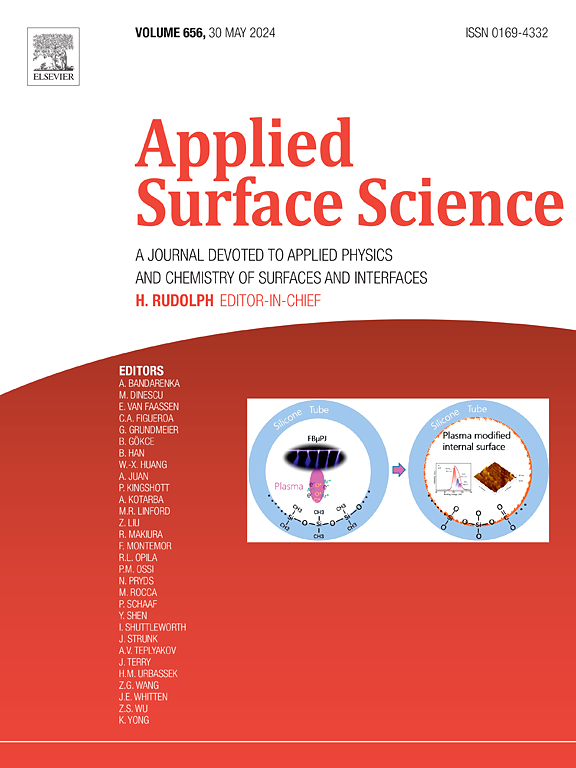Fe(Ni)Se2/Se nanoparticles anchored on C3N4 as highly active electrocatalysts in oxygen evolution reaction and liquid Zn-air batteries
IF 6.3
2区 材料科学
Q2 CHEMISTRY, PHYSICAL
引用次数: 0
Abstract
Finding catalysts with a high concentration of active sites and superior intrinsic activity is critical in boosting electrocatalytic efficiency. In this paper, Fe(Ni)Se2/Se-C3N4 is prepared through a hydrothermal and subsequent selenization method. The prepared Fe(Ni)Se2/Se-C3N4 catalyst exhibits outstanding OER performance, with a 225 mV overpotential at a current density of 10 mA cm−2. It also shows strong catalytic stability. After 856 h of testing at a current density of 2 mA cm−2, there is comparatively little current deterioration. The zinc-air battery assembled using Fe(Ni)Se2/Se-C3N4 as the catalyst shows a maximum specific capacity of 699.0 mAh g−1. At a current density of 273.1 mA cm−2, the power density increases to a maximum of 157.1 mW cm−2. The internal electron transport between Fe(Ni)Se2/Se and C3N4 modulates the electronic structure and subsequently enhances the catalytic performance, as demonstrated by synchronized radiation and theoretical calculations. The catalyst’s large specific surface area and abundance of active sites contribute to the improvement of catalytic activity. This work provides useful recommendations for the synthesis and design of efficient bifunctional catalysts in the future, facilitating the commercialization of electrocatalysis.

求助全文
约1分钟内获得全文
求助全文
来源期刊

Applied Surface Science
工程技术-材料科学:膜
CiteScore
12.50
自引率
7.50%
发文量
3393
审稿时长
67 days
期刊介绍:
Applied Surface Science covers topics contributing to a better understanding of surfaces, interfaces, nanostructures and their applications. The journal is concerned with scientific research on the atomic and molecular level of material properties determined with specific surface analytical techniques and/or computational methods, as well as the processing of such structures.
 求助内容:
求助内容: 应助结果提醒方式:
应助结果提醒方式:


